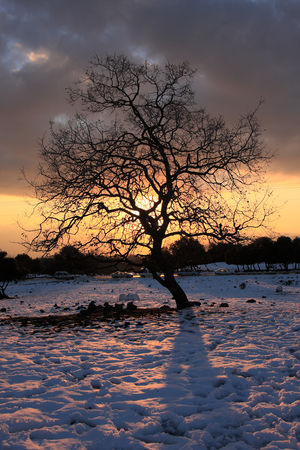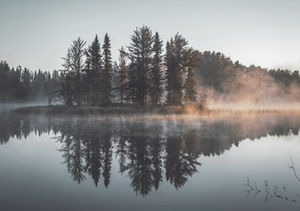
In many ways, Imbolc is my favorite festival. Even as a child, long before I had ever heard of the great Celtic fire festivals, I waited anxiously for Groundhog Day. On the morning of that fateful day, I would rise early and scan the skies, hoping to observe clouds so the shy sibyl would see no frightening shadow that might send her scampering back into her burrow for another six weeks. At the beginning of February, we still look for signs of spring. What could be more joyous and hopeful than spying the first snowdrop or crocus? The quarter days originally related to the cycles of the moon. Imbolc actually fell on the first new moon following the Winter Solstice. Imbolc or Oimelc means ‘first milk’ or ‘new milk’. It was a festival centered on an agricultural event, the birth of the spring lambs and the first milk of the ewes. Along with the new milk: butter, whey, and cheese are once more available, foods that build up the old and the young and the weak. Winter loosens her freezing grip and hope is born.
Imbolc is also a time of cleansing. This is the mid-point of the lunar Year of the Little Sun, which began at Samhain and ends at Beltane. New life is burgeoning, and the frosts of winter begin to thaw. We are blessed with a new beginning. Imbolc is a very personal festival, celebrated at home with one’s family and closest friends. More than any other sacred day, Imbolc was the festival of women. Women made all of the preparations, and there was much to be done. First, the house had to be cleaned. Any greens remaining from the Winter Solstice were taken down and, often, burned. Special cakes were baked. The old hearth fire was put out and a new one carefully laid.
When all was done indoors, the women and girls went out into the fields and glades, the groves and glens, to search for signs of spring. Snowdrops, primroses and other early flowers were gathered and taken back to the house. The oldest woman would find a birch wand and carefully peel the bark from it. Both the corn cradle and the dolly were decorated with flowers, ribbons and bright strands of red wool. The corn dolly of Imbolc is the same one brought from the fields at the end of the last harvest.
Although many weeks of wintry weather may remain at this time of year, it is the beginning of the agricultural cycle. The plows are decorated with flowers and red wool. Libations of whiskey, milk or cider are poured over plow blades and into the new furrows. Bread and cheese may be placed on the plow for the faeries. All of the agricultural tools are consecrated for the coming year. The blacksmiths’ fires and tools are also blessed. Bride’s Crosses are woven of straw and given away as good luck charms or hung in homes and barns for protection.
Many traditions are centered on healing. The Bride's Cross is a woven circle of cord about three feet in diameter. Three or four crosses are woven to it. It is passed three times over the body, from head to toe, for abundance and good health. Bearing in mind that Brighid is the Mother of Smiths, it is not surprising that many healing traditions are associated with that profession. The great blacksmith of Ireland is Gobnui, son of Brighid. She is also the same Begoibne who forges the Cauldron of Death and Re-birth. Blacksmiths have long been associated with healing. Until well into the 19th century, blacksmiths pulled teeth and performed ritual cures. In Scotland, blacksmiths practiced bloodletting as late as the 1930’s. Smithcraft was a hereditary and semi-magical occupation.
Imbolc is completely, and without question, dedicated to Brighid. She is Brighid of the Swans. The vulture, the cow, the wolf and the hound follow in Her train. She is the Lady of the Flocks and Herds. She protects women in childbirth and presides over all domestic arts. She is Brigantia, Athena, Isis. In Libya, she is Neith, who gives birth to the sky. She is the Great Archer whose arrows of oak and rowan defend the land. Her arrows are three in number: Knowledge, Wisdom, and Inspiration.
Although they tried to eradicate the honor in which She was held by the Celts, the Christian missionaries did not succeed. Brighid became St. Brigit, whose birth is celebrated on February 1st. To this day, she is invoked for protection from poverty and arrest. She is called on to save from death by drowning and burning. Charms ask her to protect the kine, goats, sheep, horses, and herds. She protects all domestic beasts from wounds, predators, falls from heights, and from mischievous faeries.
As both saint and Goddess, She is associated with rivers and water. The River Brent, in Middlesex, and the River Braint, in Anglesey (Mona), bear Her name. Even to this day, there are Bride Wells all over Britain. She is the strength of the new moon and the spring of the year, the Lady of the Flowing Sea. In some locations, it was custom to place a representation of Her in a chariot, which was then floated on a lake or the sea. She is the Guide of Shamans, most easily contacted at Her wells and springs, in groves and barrows, or in the fires of the hearth and forges.
She presides over the first days of the returning spring, and we remember Her at Imbolc.





